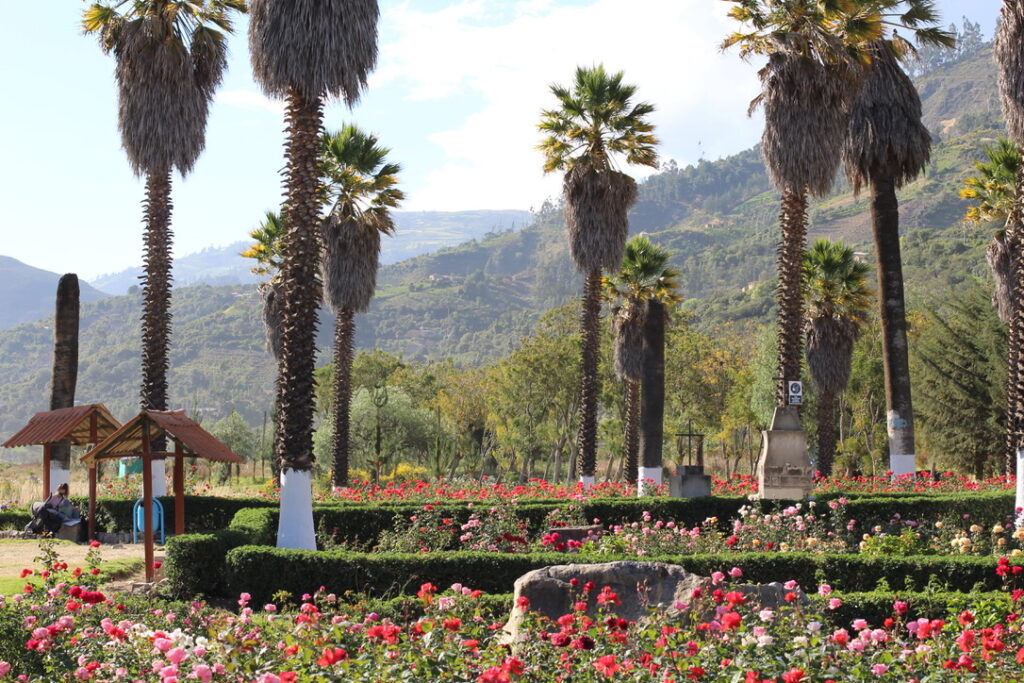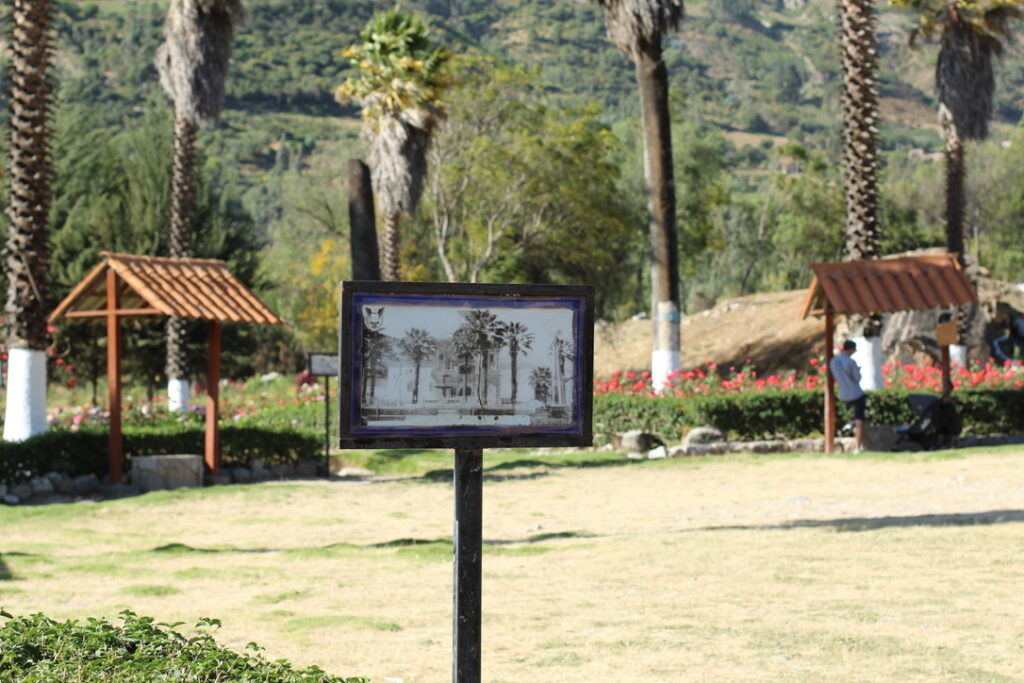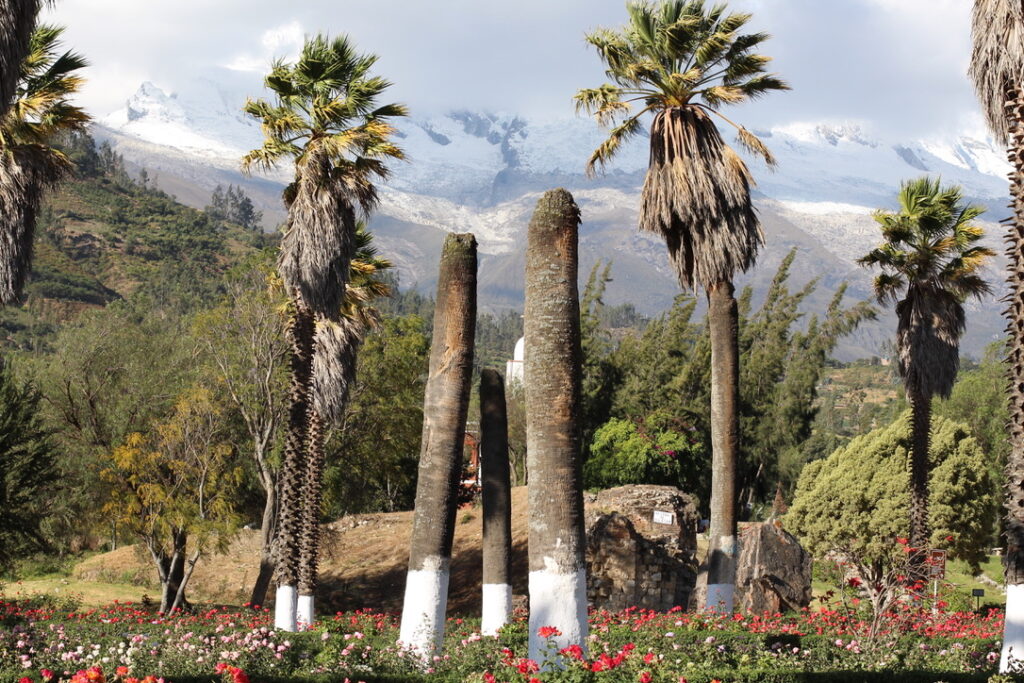The Plaza de Armas was the town’s main square and a hub for social and religious gatherings. Like many Spanish colonial squares, it was marked by towering palm trees in its four corners. In times before accurate maps, these were important geographic referents. They were used in place of compasses for those who navigated the valley on horseback.
Almost miraculously, the palm trees in the Plaza de Armas withstood the force of the landslide. As the landslide engulfed the church at the head of the square, this created a pocket of air that protected the palm trees. Iconic photographs of the aftermath of the disaster show the tops of the trees emerging from a swampy landscape.
The palm trees have since grown and are joined by other ornamental plants that demarcate the shape of the original plaza. Of the four original palm trees, only one survives today (although the trunks of the three dead trees are still standing). The palmeras have been the subject of many poems, essays, and songs about Yungay and its disappearance.



